Study, work or travel in the UK. British
culture and life.


Using London Underground (the Tube)
|
|
Study, work or travel in the UK. British
culture and life.
|
|
||
|
|
|
|
||
 |
||||
|
|
|
|
||
|
|
||||
 |
||||
|
Using London Underground (the Tube)
|
||||
|
Sections:
|
Introduction |
 |
| Planning your journey | ||
| Tickets | ||
| Oyster card | ||
| Ticket prices (2013) | ||
| Group travel | ||
| Tube etiquette | ||
| Access for disabled | ||
| DLR (Docklands Light Railway) | ||
| Further information | ||
| Links |
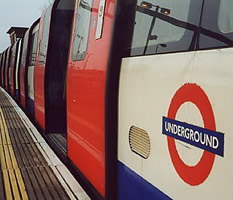 |
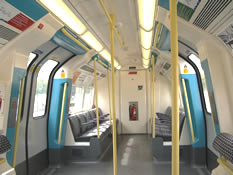 |
 |
London
all-on-one [Tube, bus and walking map for central London] Publisher: Quickmap Ltd Date: January 2009 |
 |
London
tube and walk [Tube and walking/sightseeing map for central London] Publisher: Quickmap Ltd Date: January 2009 |
|
|
London:
By Tube [explore London's tourist attractions by Tube] Author: Matthew Tanner, Joss Waterfall Publisher: Navigator Guides Date: July 2005 |
 |
The
Little Book of Tube Etiquette [a light-hearted look at bad manners on the underground] Publisher: Gibson Publishing Date: December 2010 |
|
Tourists coming to London: buying travel tickets
|
| The following are the main options for someone who is
coming to London for a short visit: (1) You may be able to buy a Visitor Oyster card before coming to London. For details see: http://visitorshop.tfl.gov.uk (2) You can get an Oyster card after you have arrived in London, at an underground station's ticket office or at a London Travel Information Centre (note that you cannot buy them at a train station's ticket office). You pay a deposit for the card. You will need either to add some credit to your card, and top up your credit when you need, or perhaps you may choose to add a 1-week travelcard for the zones which you will be using each day. If you don't get an Oyster card you will need to pay more expensive fares for single journeys or one-day travelcards. Note that your deposit can be refunded (together with any remaining cash balance, up to a maximum of 10 pounds) if you hand in the Oyster card when you leave - you will only be paid back in cash if you paid for the card and credit using cash. (3) If you have a friend who has been to London you can borrow his/her Oyster card. Note that you can only borrow a standard adult Oyster card (one which does not contain a photo). If you are staying in central London for a week or more you may find it cheapest to buy a 7-day zones travelcard for the zones you need (many of the popular tourist attractions are in zone 1 or zone 2). For stays of less than a week the cheapest option is usually to use pay-as-you-go with an Oyster card, or to buy 1-day paper travelcards. Heathrow Airport is in zone 6, so to get from here to central London you may want to buy either a single ticket or a zones 1-6 one-day travelcard (or you can use a faster but more expensive train service). London City Airport is in zone 3 (near a DLR station). London's other airports are outside the London transport area (if you travel by train you can ask for a ticket which includes a travelcard, so that you can use the same ticket to take the Tube to your destination). Student visitors aged 18 or over pay the normal adult fares - student discounts are only for those who are studying in London and who have obtained the appropriate photocard. Children under 16 (or those aged 16 or 17 who have previously obtained a 16-17 Oyster photocard) can buy cheaper cash fares and travelcards. Children under 11 can travel free on the Tube and DLR. |
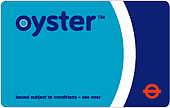 Oyster card |
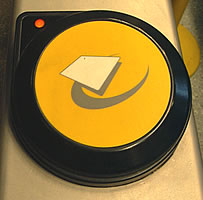 Oyster card reader |
 Oyster route validator |
|
Payment method:
|
Cash
|
Oyster pay-as-you-go
|
Oyster pay-as-you-go
|
Oyster pay-as-you-go
|
Oyster pay-as-you-go
|
|
Services used (*):
|
Transport for London
|
Transport for London
|
Transport for London
|
National Rail only
|
National Rail & Transport for London
|
|
Zones (#)
|
Cash
single fares |
Single fares:
Peak (off-peak **) [off-peak with railcard ###] |
1 day daily price cap
Peak (off-peak **) [off-peak with railcard ###] |
Single fares
Peak (off-peak **) |
Single fares
Peak (off-peak **) |
|
1
|
£4.50
|
£2.10 (£2.10) [£1.40]
|
£8.40 (£7.00) [£4.60]
|
£2.20 (£1.70)
|
£3.70 (£3.10)
|
|
1-2
|
£4.50
|
£2.80 (£2.10) [£1.40]
|
£8.40 (£7.00) [£4.60]
|
£2.40 (£1.90)
|
£3.90 (£3.30)
|
|
1-3
|
£4.50
|
£3.20 (£2.70) [£1.80]
|
£10.60 (£7.70) [£5.10]
|
£3.10 (£2.20)
|
£4.60 (£3.60)
|
|
1-4
|
£5.50
|
£3.80 (£2.70) [£1.80]
|
£10.60 (£7.70) [£5.10]
|
£3.60 (£2.50)
|
£5.10 (£3.90)
|
|
1-5
|
£5.50
|
£4.60 (£3.00) [£2.00]
|
£15.80 (£8.50) [£5.60]
|
£4.70 (£2.90)
|
£6.20 (£4.30)
|
|
1-6
|
£5.50
|
£5.00 (£3.00) [£2.00]
|
£15.80 (£8.50) [£5.60]
|
£5.70 (£3.90)
|
£7.20 (£4.90)
|
|
1-7
|
£6.70
|
£5.50 (£3.90) [£2.60]
|
£19.60 (£11.60) [£7.60]
|
£5.70 (£3.90)
|
£7.20 (£4.90)
|
|
1-8
|
£7.80
|
£6.70 (£3.90) [£2.60]
|
£19.60 (£11.60) [£7.60]
|
£6.70 (£3.90)
|
£7.20 (£4.90)
|
|
1-9
|
£7.80
|
£6.70 (£3.90) [£2.60]
|
£19.60 (£11.60) [£7.60]
|
£6.70 (£3.90)
|
£7.20 (£4.90)
|
|
Payment method:
|
Oyster pay-as-you-go
|
Oyster Travelcard
|
Oyster Travelcard
|
Oyster Travelcard
|
|
Services used (*):
|
Transport for London
|
Transport for London
|
Transport for London
|
Transport for London
|
|
Zones (#)
|
1 day price cap (***)
Peak (off-peak **) [off-peak with railcard ###] |
1 week Travelcard
Adult (Student ##) |
1 month Travelcard
Adult (Student ##) |
1 year Travelcard
Adult (Student ##) |
|
1
|
£8.80 (£7.30) [£4.60]
|
£30.40 (£20.40)
|
£116.80 (£81.50)
|
£1216 (£848)
|
|
1-2
|
£8.80 (£7.30) [£4.60]
|
£30.40 (£20.40)
|
£116.80 (£81.50)
|
£1216 (£848)
|
|
1-3
|
£11.00 (£8.00) [£5.10]
|
£35.60 (£23.90)
|
£136.80 (£95.70)
|
£1424 (£996)
|
|
1-4
|
£11.00 (£8.00) [£5.10]
|
£43.60 (£29.20)
|
£167.50 (£117.20)
|
£1744 (£1220)
|
|
1-5
|
£16.40 (£8.90) [£5.60]
|
£51.80 (£34.80)
|
£199.00 (£139.10)
|
£2072 (£1448)
|
|
1-6
|
£16.40 (£8.90) [£5.60]
|
£55.60 (£37.30)
|
£213.60 (£149.40)
|
£2224 (£1556)
|
|
1-7
|
£20.40 (£12.10) [£7.60]
|
£60.40 (£40.50)
|
£232.00 (£162.10)
|
£2416 (£1688)
|
|
1-8
|
£20.40 (£12.10) [£7.60]
|
£71.20 (£47.80)
|
£273.50 (£191.30)
|
£2848 (£1992)
|
|
1-9
|
£20.40 (£12.10) [£7.60]
|
£79.00 (£53.00)
|
£303.40 (£212.00)
|
£3160 (£2208)
|
|
Zones (#)
|
Tube and DLR Group Day Ticket
Adult |
Tube and DLR Group Day Ticket
Under 18 |
|
1-6
|
£4.50
|
£1.70
|
|
1-9 (plus Watford Junction)
|
£6.50
|
£2.20
|
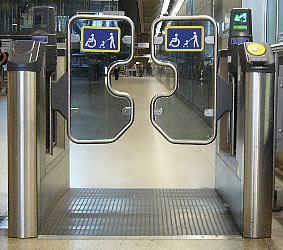 Wheelchair users should use the wide access gates |
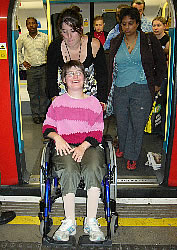 Getting on a Tube train at an accessible station |
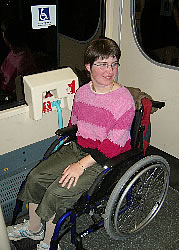 There is space for a wheelchair near the double-doors |
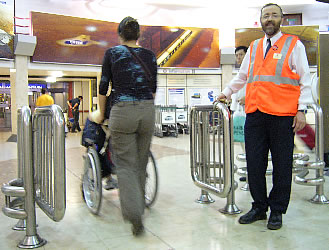 Ask a member of staff to unlock barriers at Heathrow |
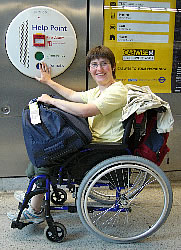 Help Points are available on the platforms |
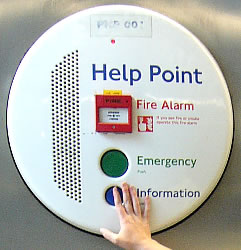 Press the Information button to speak to a member of staff |
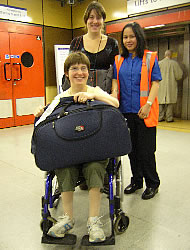 A member of Tube staff providing assistance |
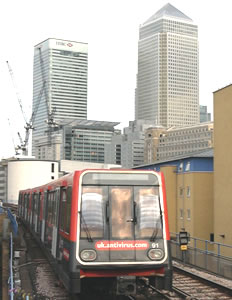 |
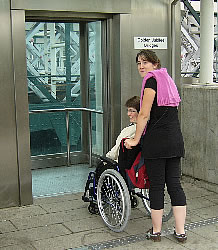 The DLR is accessible for wheelchair users: use the lifts to get between platforms or to reach the exit |
|
|
|